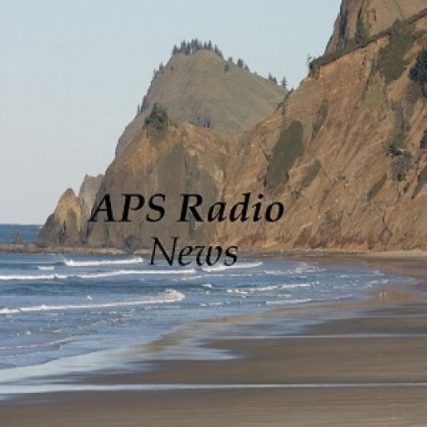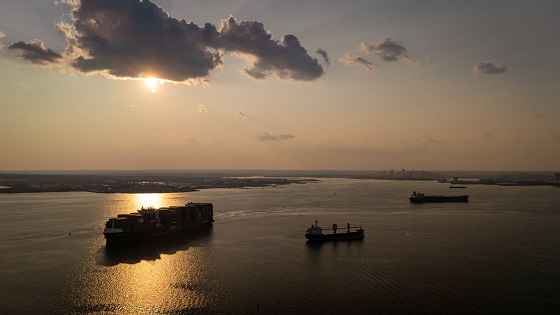Key Bridge news bulletin news
(The Baltimore Sun) — The massive ships that regularly sail into Maryland carry cars, cargo, commerce — and a degree of potential calamity.
That minute, but real, risk that each vessel presents became horribly apparent March 26, when the 100,000-plus-ton Dali cargo ship decimated the Francis Scott Key Bridge, killing six men, after losing power at the most inopportune moment. It was an unprecedented disaster, but a huge ship losing propulsion had happened before, many times, in fact. And in the months since the tragedy, there have been other instances of ships experiencing trouble in Maryland waters.
No ship has had a complete loss of power since the Dali did, but in Maryland waters since March 26 there have been at least seven instances of ships experiencing a loss or reduction of power or steering, according to the Coast Guard.
In one case, it was a cargo ship that briefly lost engine power as it departed the Seagirt Marine Terminal while it was tied to tugboats, which safely guided it back into a berth. In others, the issue happened far from any infrastructure.
Another instance, though, occurred Aug. 1 in the direct vicinity of the Chesapeake Bay Bridge — bringing to mind a possible disaster even more catastrophic than the Key Bridge collapse. In that case, a 946-foot, old naval vessel named the Denebola, on its way to Texas to be recycled, experienced a steering issue near the bridge. Maryland Transportation Authority Police were notified of a “ship in distress” and stopped vehicle traffic on the bridge for about 15 minutes.
The vessel ultimately regained steering and passed through safely, receiving a Coast Guard inspection near Annapolis before continuing its journey.
Key Bridge news bulletin news
The responsibility of ensuring that the gargantuan vessels that regularly call on Baltimore are operating safely falls on the ship’s country of registry — whichever flag it has — as well as its classification society, which certifies a ship’s seaworthiness. Once in U.S. waters, the onus is on the Coast Guard to screen each ship and decide which ones to inspect.
An inspection typically lasts two to four hours, but can take much longer if the Coast Guard notices issues with the vessel, said Cmdr. Brian Hall, the Coast Guard’s chief of Port State Control. The Coast Guard tries “to use our resources as efficiently as possible” and is often updating its protocols, Hall said.
But still, just as there lies a risk of a car accident when even the most heedful driver gets behind the wheel, there is always a chance something goes awry in the water.
“I would say there is certainly an inherent risk to having these huge vessels operating in U.S. waters,” Hall said, “and we do everything that we can to eliminate or mitigate that risk.”
In the minutes before the Key Bridge collapsed, transportation authority police shut down vehicle traffic on the span, likely saving the lives of many drivers. That marked the first time in recent memory, and perhaps ever, that the 47-year-old bridge was shut down due to the emergency threat of a ship strike. There had not been other similarly close calls before; the transportation authority, which owns the bridge, has said it is “not aware” of any prior closings due to the threat presented by a vessel.
(Please click onto the photo fo the pretty Oregon cat to hear Oldies & Classic Rock)

When the Bay Bridge’s traffic was temporarily halted earlier this month, that, too, likely marked the first time, according to transportation authority records, that it had been closed due to the potential of a vessel collision. Similarly, a bridge in Charleston, South Carolina, was closed in June when a cargo ship lost engine control and sped through the harbor. That was also the first time the span, the Arthur Ravenel Jr. Bridge, had been closed because of an emergency presented by a ship.
Key Bridge news bulletin news
The Key Bridge collapse was an anomaly, but it has spurred a renewed focus on infrastructure protection, including a Coast Guard probe analyzing the security of 11 ports across the country. And although ports and bridges can seek to protect themselves — by installing pier protection, requiring tugboats or other measures — the behemoths continue to bring with them a chance of peril. A tiny inconsistency can spell mammoth consequences. As the National Transportation Safety Board investigates the Dali and Key Bridge incident, it is focused on one of the ship’s electrical components, about the diameter of a soda can.
It falls on the Coast Guard to screen and inspect foreign vessels. Last year, 10,959 different foreign vessels came to the U.S. and the Coast Guard conducted 8,278 exams (inspecting some ships more than once, and others none), detaining 101 ships.
Older ships and ones that have had problems before, or that haven’t been inspected in a while, are more likely to be examined. Newer ones and those without issues are less likely.
Inspectors meet with the master of the vessel, the chief mate and chief engineer, go over paperwork and then check the overall condition of the ship, its fire safety equipment, its ability to operate, and so on, Hall said.
For three straight years, fire safety deficiencies have been the leading cause of detaining a vessel, according to the Port State Control’s 2023 annual report.
Inspections are unable to prevent 100% of ship troubles, though, as evidenced by the dozens of ships that have experienced issues in Maryland waters alone in recent years.
Just three weeks after the Dali plowed into the Key Bridge, a 590-foot vessel experienced a loss of propulsion 5 miles south of the Bay Bridge and then, in June, a 623-foot bulk carrier had problems two separate times.
As long as ships sail, they will present a threat. And vessels are not only getting larger, given the economic demands of international trade and the supply chain’s reliance on the seas, they are becoming more plentiful, too. The number of registered ships increased from 78,300 in 1990 to 106,700 in 2023, according to Jean-Paul Rodrigue, a Texas A&M-Galveston University professor whose research focuses on transportation and logistics.
Key Bridge news bulletin news
Sal Mercogliano, a former merchant mariner who hosts the YouTube show “What is Going on With Shipping?” hypothesizes that during the coronavirus pandemic, many mariners left the industry. That could result in more issues at sea, he said, as could economic pressures to deliver goods as quickly as possible.
In regard to ship inspections, he said that “not enough resources” are allocated to the Coast Guard for them to most effectively inspect ships.
Listing several instances of ships having trouble near other vessels or infrastructure — such as when a cargo ship lost propulsion as it sailed close to New York’s Verrazzano-Narrows Bridge in April — Mercogliano said ship issues are something the industry has not yet solved.
“I think it’s really appropriate to put some light on this right now,” he said, “because, again, what we’re seeing is more and more ships [that sail] a lot faster, volatility. We’re sailing much longer now, because they’re getting older [and] we’re not replacing ships as quickly.”
Recently revealed reports into the Key Bridge from the early 2000s explored vulnerabilities in the span and, reached Saturday about the reports, former Maryland Gov. Parris Glendening pondered the prevention of a potential future calamity.
“I believe that one of two things has to be done: either much more of an international effort to limit the sheer size of these ships, because of their danger, or a much more concerted national effort for us to retrofit in a major way, a lot of our existing infrastructure,” he said.
Key Bridge news bulletin news
It seems unlikely that there will be a reversal in the size of ships, which continue to grow wider, taller and heavier. And Maryland is preparing for that ongoing trend, as the replacement Key Bridge is expected to be taller to make way for the eventuality of larger vessels.
So, the big ships will continue to come. But preventing the next shipping disaster, in Maryland or elsewhere, will likely require a multipronged approach — mitigating the risks presented by ships, as well as boosting infrastructure.
Of the thousands of ships that call on the East Coast each year, rarely are there problems. But as the Key Bridge calamity illustrated, one small issue can create a disaster that, up until that moment, lacked precedent.
Instances of deep-draft vessels experiencing trouble in Maryland waters since March 26
•April 11, Kotor, loss of propulsion, roughly 5 miles south of the Bay Bridge
•May 31, Sheng Ping Ha, issue and location not provided by Coast GuardJune 6, Baltic K, issue and location not provided by Coast Guard
•June 14, Baltic K, reduced propulsion, in Patapsco River
•July 1, Bellavia, loss of propulsion, in Patapsco River near Seagirt Marine Terminal
•July 10, Algoma Victory, loss of propulsion, in Patapsco River off Fort Howard
•August 1, Denebola, steering issue, near Bay Bridge
©2024 The Baltimore Sun. Visit at baltimoresun.com. Distributed by Tribune Content Agency, LLC.
Key Bridge News bulletin news


